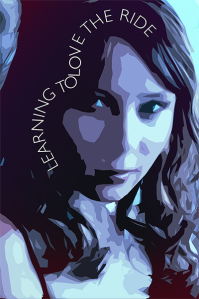14-Jun-1984
Sometime during the early hours of the following Thursday morning, rain pounding on the Maternity Ward’s windows, obscuring the view of the city in rivulets down the glass, the two women both delivered their babies.
They both delivered twins: Inez delivered Sabrina and Morne, a girl and a boy. Irma also delivered a girl and a boy: Mirrischka and Kieran. What were the chances of: two women, close friends, who spent all their time together, impregnated at roughly the same time by the same young man, conceiving during the same menstrual cycle, both developing twins, and eventually both delivering on the same night in the same hospital: a boy and a girl each? It must be in the order of millions or more, to one.
But the strangeness hadn’t finished with the birth of the children. Inez gave birth to a Colored boy and girl, her Colored genes mixed with Vladimir’s European genes to produce – as usual – mildly, but noticeably Colored twins. Their skin tones were lightly caramel colored and their features were characteristic of the surrounding Coloured population. Irma on the other hand, being of completely Caucasian descent, her genes mixed with Vladimir’s European genes to produce two completely Caucasian twins. Their skin tones were pale to the point of translucence and their facial features were noticeably Eastern European.
No one knows exactly what happened next except Irma. Inez has since passed on so we don’t have a first-hand account from her. But she always refused to discuss the subject while she was alive.
At some point during the night, or the early hours of the next morning, Irma had claimed the Colored children, Sabrina and Morne as her own children, leaving Inez with Mirrischka and Kieran. There’s no record of this having been done officially, and there was no rumor that there had been any argument over the subject at the time. In those days, there was less security imposed on infant babies. Nowadays, an infant is tagged immediately with the mother’s name and sleeps in a small crib with the mother in her ward. In those days, infants slept in a larger nursery, surrounded by other babies, with only a sign on their crib indicating to whom they belonged.
It would have been very easy for Irma to swop the name signs while alone in the nursery.
Inez was single. Her biggest worry at the time was how she was going to work and look after twin babies at the same time. Irma on the other hand was married. Her Colored husband was offshore working in the merchant navy while this all happened. Perhaps she felt that if she presented him with two Caucasian infants he would suspect that she’d had an affair while he was offshore. It makes sense to presume that by presenting him with two Coloured infants he would immediately accept them as his own.
Perhaps Inez was complicit in the swop at the time; loving her friend so much, she was willing to help her protect her marriage? After all, Caucasian children were very unusual in her area at the time and it would’ve been quite a privilege for her to have a pair. Perhaps she was none the wiser. Her eyesight had always been very bad. Her first pair of children’s glasses, received when she was nine months old, a first in the country at the time, are still on display in the Groote Schuur medical museum today. Perhaps she simply didn’t notice the switch.
Either way, the switch went unnoticed and official birth certificates were printed. Both mothers took their new, non-biological babies home to carry on their lives as best they could.
At just a few hours old, her biological mother had abandoned Mirrischka.
Vladimir came for Kieran a couple of months later. His father was sending him home, back to Russia, back to the family. He took the boy back to Russia with him, but left the girl, Mirrischka where she was, with Inez. There was no need for girls in Russia at the time; they were second-class citizens.
At just a few months old, her biological father had abandoned Mirrischka.
Irma and her family immigrated to Australia, probably at Irma’s insistence, to put as much distance between the two families as possible. Mirrischka remained with Inez and her Pa. At one point Inez approached Vladimir’s grandmother who was still living in Cape Town for assistance. But she was turned away at the door.
This illicit exchange remained a secret for many years, but as the young children grew up, it became obvious that something had happened that night, something that neither Inez nor Irma were prepared to talk about.
Photographs taken and traded over the years showed that Irma’s children resembled Inez and that Mirrischka looked exactly like Irma. By Miki’s sixteenth birthday the resemblances across the families were too distinct to deny. Mirrischka’s aunts and friends of the family mentioned it to her whenever they could; the rumor-mill had already convinced itself.
Further investigation by Mirrischka in her early twenties, confirmed it for her, personally. She questioned her aunts and Inez insistently, getting Inez merrily tipsy on many occasions in an effort to loosen her tongue. Eventually, she too was convinced, despite what the two women refused to admit: the two sets of twins had been exchanged at birth.
